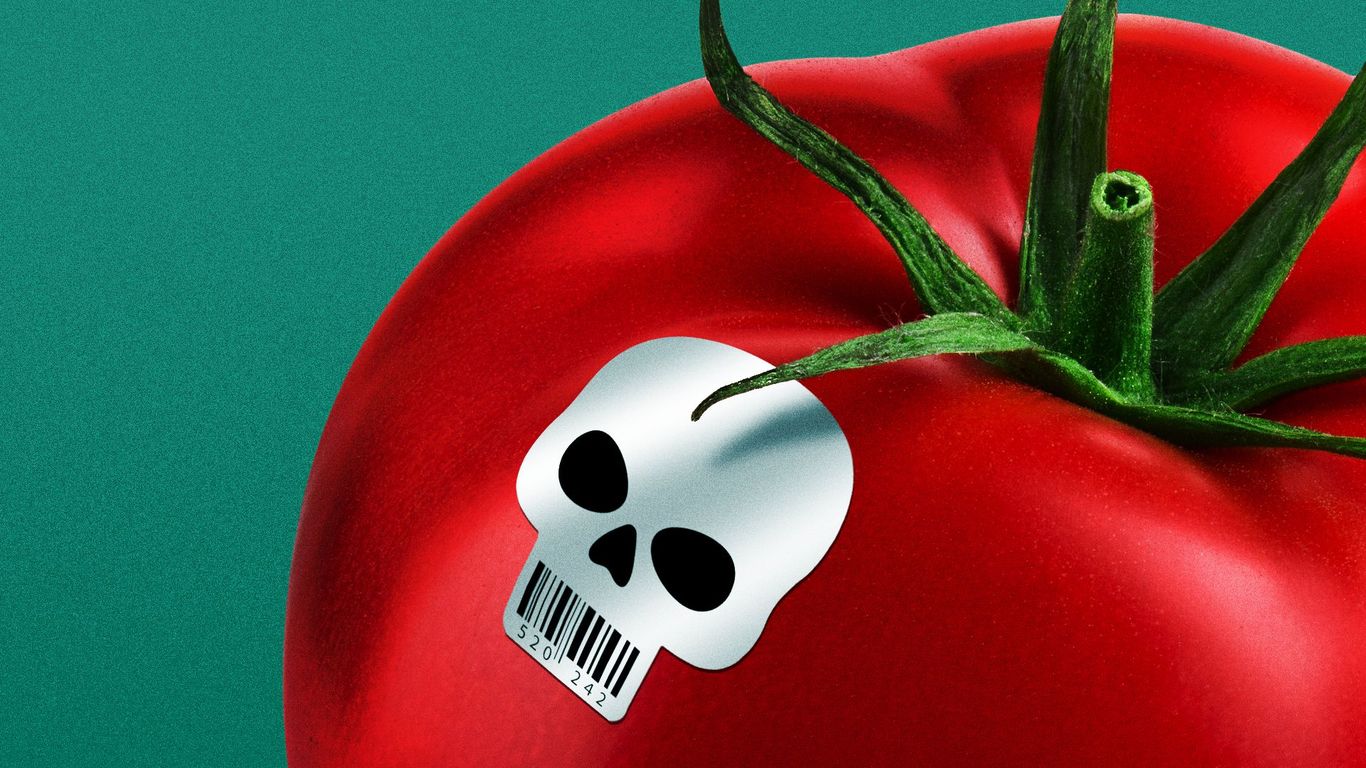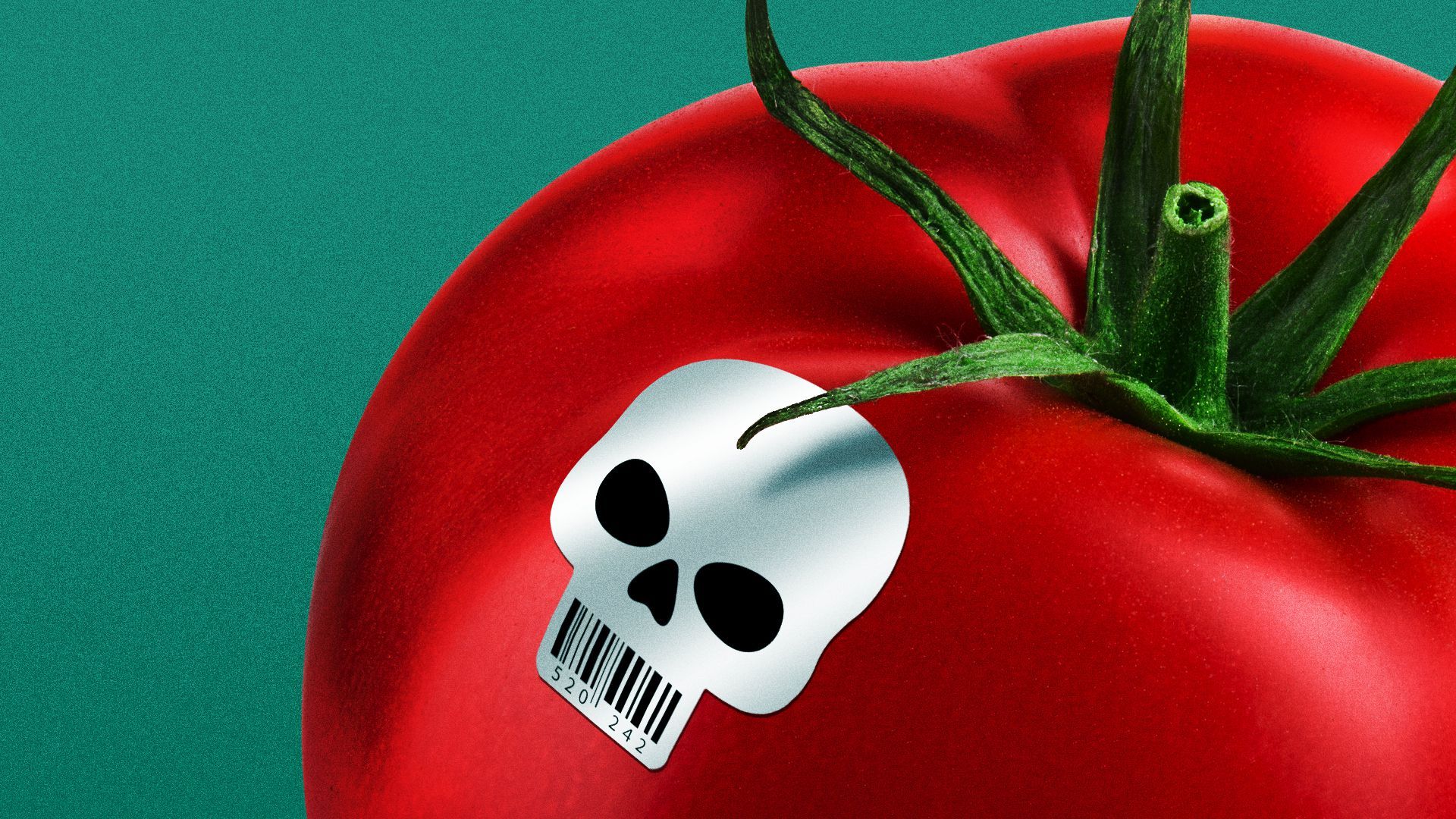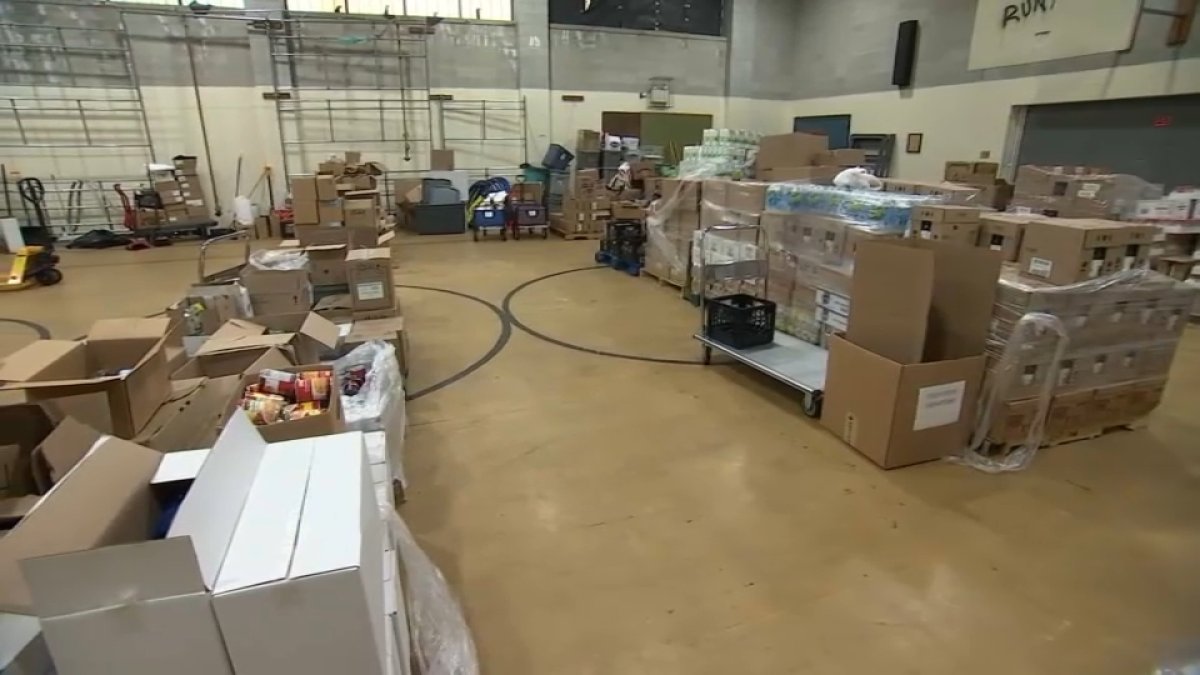
Illustration: Maura Losch/Axios
Declining plant health could necessarily mean increased food items prices for currently constrained American shoppers, authorities convey to Axios.
Driving the news: It may not be evident why the well being of vegetation is a contributing aspect to foodstuff shortages in formulated nations. But there’s a direct link — when they’re diseased, there is certainly less food stuff to go around, and food stuff charges rise appropriately.
- A heady cocktail of weather impacts blended with conservation failures is contributing to the trouble.
What they are indicating: “Plant wellness can affect our foodstuff provide, our food items stability,” Tim Widmer, a national program chief for plant health in the crop manufacturing and defense application at the USDA’s Agricultural Exploration Service, tells Axios.
- If plenty of staple crops are devoured by bugs or turn out to be diseased, Widmer claims U.S. shopper food items charges — which are by now significantly greater than normal — could climb in response.
- “Now with climate change, that as well, is putting an additional tension on our food source, in phrases of plant well being.”
How it operates: Warming temperatures fueled by climate improve are escalating the danger of plant pathogens and pests spreading into new ecosystems.
The intrigue: The partnership concerning crop creation and foods safety in acquiring nations around the world has been well proven, but the impacts on wealthier nations, in which food insecurity is more of a social challenge, have been fewer obvious.
- The U.S. is not “immune” to the impacts of declining food items output, for every the CDC.
- According to the company, foods insecurity rises as the price tag of foods will increase, and so do fees of micronutrient malnutrition, which happens when healthier foodstuff are inaccessible or men and women go hungry.
- “Right here in the U.S., I think we have taken foodstuff for granted, for the reason that we’ve often experienced a good supply,” states Widmer, noting that the COVID pandemic uncovered source chain vulnerabilities, these types of as nationwide grocery shortages.
What we are observing: A 2022 report by the Environmental Defense Fund forecasts that underneath a reasonable emissions circumstance, the U.S. will see “significant climate burdens” on crop generation in the Midwest as shortly as 2030.
- The report looks at projected modifications in seasonal temperatures, but does not assess the impacts of pests and disorders, which are liable for anyplace amongst 20{d589daddaa72454dba3eae1d85571f5c49413c31a8b21559e51d970df050cb0e} to 40{d589daddaa72454dba3eae1d85571f5c49413c31a8b21559e51d970df050cb0e} of losses to worldwide crop output, according to the Food and Agriculture Business of the United Nations.
Of be aware: “There are diseases out there that we know that if they would appear into the U.S., that we would have some severe problems,” suggests Widmer.
- A quickly-performing fungal condition known as “wheat blast” — which beneath specified circumstances can result in produce loss up to 100{d589daddaa72454dba3eae1d85571f5c49413c31a8b21559e51d970df050cb0e} — is a person instance.
- Wheat is the principal meals grain developed in the U.S., according to the USDA’s Economic Investigation Company.
- The important to steering clear of disorders like wheat blast is by means of exclusion, or keeping them from coming into a place, which receives harder to do when you contemplate corresponding local climate impacts, Widmer states.
But, but, but: When some insect species pose substantial threats to agricultural crops, some others assist strengthen plant advancement.
- Shawan Chowdhury, conservation biologist at the German Centre for Integrative Biodiversity Study, tells Axios in an email that insects are a important source of pollinators — so if insect populations decrease it will hamper crop yields.
- “If there are not adequate bugs, quite a few other species will decline as well owing to foods scarcity,” claims Chowdhury.
- And a 2022 study printed in the journal Environmental Overall health Views uncovered that insect populace declines, brought about because of local climate alter and expansion of agriculture, has led to insufficient pollination, ensuing in 3{d589daddaa72454dba3eae1d85571f5c49413c31a8b21559e51d970df050cb0e}-5{d589daddaa72454dba3eae1d85571f5c49413c31a8b21559e51d970df050cb0e} fruit, vegetable and nut output getting lost globally.
- Scientists also linked the influence of crop declines on balanced food items output to around 500,000 yearly diet-linked early fatalities.
The bottom line: “Crops get unwell much too,” USDA’s Widmer tells Axios. “If we can have healthier vegetation, we can have a healthy setting, and a healthier human and animal populace.”






